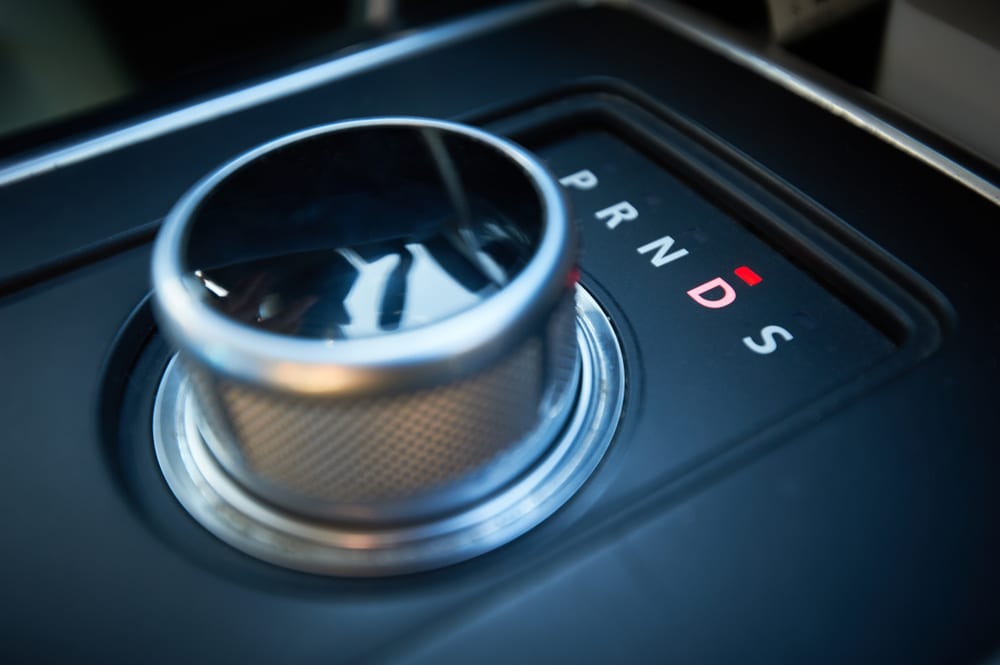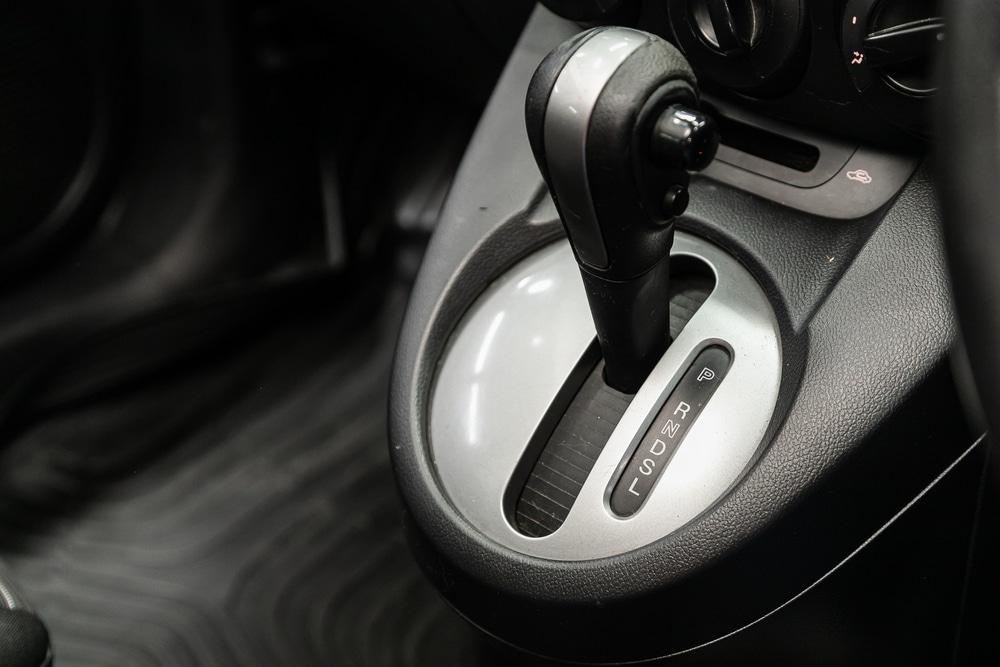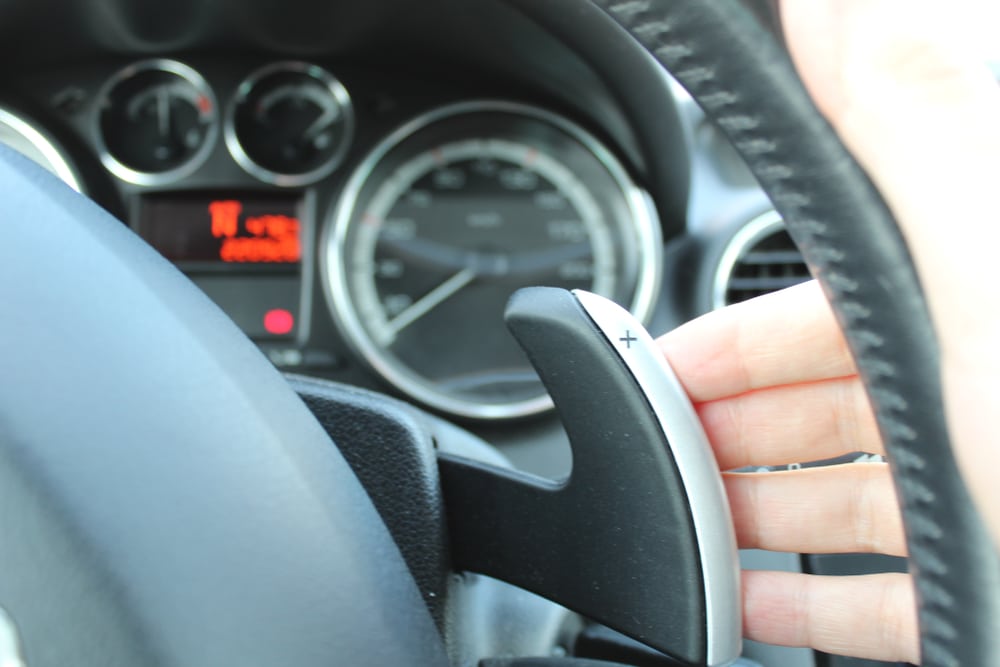
Driving a car with an automatic transmission can be a smooth experience, offering you the convenience of not having to manually change gears.
However, you may have noticed a curious letter “S” on your gear shift and wondered what purpose it serves.
The “S” on your gear shift stands for “Sport Mode,” a driving setting designed to enhance your car’s performance and responsiveness.
When you shift into Sport Mode, your vehicle’s engine will deliver higher RPMs while keeping the transmission in a lower gear, making your drive feel sportier and more engaging.
This feature is not exclusive to sports cars, as it aims to provide a sports car-like experience for any vehicle with that option.
Understanding the Gear Shift and the ‘S’ Meaning

In most cases, this ‘S’ stands for Sport Mode, which is designed to enhance your driving experience by providing a more responsive and exhilarating drive.
While in Sport Mode, some combination of your car’s transmission, suspension, and engine settings are adjusted to offer a more aggressive driving experience. In most vehicle’s it’s only the transmission that is affected.
Typically, this mode keeps your car in lower gear settings for longer periods of time, increasing power and torque output, as well as improving acceleration. This can be beneficial when driving on winding roads or in situations that require a responsive vehicle.
To activate Sport Mode, simply shift the gear selector into the ‘S’ position. Keep in mind that using this mode may lead to increased fuel consumption due to higher engine revs and more aggressive driving. If fuel efficiency is a priority, you may want to reserve Sport Mode for specific driving scenarios.
While Sport Mode is an exciting feature, it’s important to remain cautious and responsible when driving. Implementing Sport Mode should not be an excuse for reckless driving or excessive speed. Always make sure to maintain a safe speed and follow traffic regulations while enjoying the enhanced driving performance provided by this feature.
Various Modes of Driving

Normal Mode
In Normal mode, your car drives efficiently while maintaining comfort and practicality. This is the standard driving mode suitable for everyday use.
When you start your vehicle, it automatically engages Normal mode by default. This mode focuses on providing a smooth driving experience without sacrificing fuel consumption, ensuring that your vehicle performs optimally under most driving conditions.
Sport Mode
When you see the “S” on a gear shift, it stands for Sport Mode. Activating Sport mode alters your car’s engine, transmission, and suspension settings, making the vehicle more responsive and providing an exhilarating driving experience.
To engage Sport mode, simply move your gear selector to the “S” setting. Keep in mind that while Sport mode allows for a more aggressive driving style, it may also result in increased fuel consumption.
Many vehicle with sport mode have paddle shifters that can be used to manually shift the vehicle in “sport mode”.
Low Gear Mode
Low gear mode, also known as “L” or “1” and “2” on some gear shifters, is designed to help you navigate through specific driving situations such as steep inclines or heavy traffic.
Using low gear mode provides improved control and engine braking, preventing your vehicle from gaining speed while going downhill and requiring less braking to maintain a stable speed.
To engage Low gear mode, move your gear selector to the designated “L”, “1”, or “2” setting. Keep in mind that maintaining a vehicle at a low gear for an extended period can result in increased fuel consumption and engine wear. Therefore, it’s best to use Low gear mode only when necessary, switching back to Normal mode after overcoming the challenging driving conditions.
Benefits of Sport Mode
Improved Performance
Sport Mode, indicated by the “S” on your gear shift, offers a noticeable improvement in your car’s performance.
When you switch to Sport Mode, your vehicle will adjust its transmission, suspension, and engine settings to provide a more responsive and exhilarating driving experience. Activating Sport Mode typically results in:
- Increased horsepower and torque: Your car’s power output may be enhanced (depending on the vehicle), delivering a more lively driving experience.
- Faster gear shifts: Your vehicle’s transmission shifts gears more quickly, making the most of your engine’s power.
- Higher RPM range: Your car operates at a higher RPM range, further increasing available power and responsiveness.
Remember, Sport Mode is not intended for everyday driving and should be used only on clear and dry roads.
Potential Drawbacks of Sport Mode
Increased Wear
When you use Sport Mode in your vehicle, be aware that it can lead to increased wear on certain components. By holding gears for longer periods and generating more power, you place additional stress on the engine and transmission.
This may result in more frequent maintenance or even premature failure of some parts. To mitigate these risks, be sure to adhere to your vehicle’s recommended maintenance schedule and give your car occasional breaks from Sport Mode usage.
Lower Fuel Economy in Some Cases
Another potential drawback of using Sport Mode is its impact on fuel economy. In this mode, the engine tends to operate at higher RPMs, potentially resulting in increased fuel consumption.
This mode often delays gear shifts in order to optimize power and performance, which can negatively affect your vehicle’s overall gas mileage.
As a result, if you’re striving for greater efficiency or simply looking to decrease your fuel costs, use this mode sparingly.
When to Use Sport Mode
Sporty Driving
When you’re in the mood for a more engaging and dynamic driving experience, Sport Mode is your go-to choice. By shifting your gear to “S” or pressing the designated button, your car will offer improved throttle response and deliver power more quickly.
This setting allows for rapid accelerations and higher engine RPMs, making it perfect for those moments when you want to unleash your car’s full potential on the open road. However, keep in mind that using Sport Mode frequently may result in increased fuel consumption.
Challenging Road Conditions
Sport Mode can also be beneficial in certain challenging road conditions. For example, if you’re navigating steep hills or tight curves, activating Sport Mode can provide enhanced control and responsiveness.
By holding the transmission in lower gears longer, it helps maintain optimal engine power to better tackle inclines and maintain speed around bends. While it’s not a substitute for cautious driving when faced with difficult road conditions, it can be a handy tool to have at your disposal for added performance and stability.
Conclusion
In summary, the “S” on a gear shift stands for Sport Mode. By engaging this mode, your car’s engine will deliver higher RPMs while keeping the transmission in a lower gear.
This results in a sportier and more responsive driving experience for you. Sport Mode can come in handy when you’re looking for a thrill or need enhanced performance in certain situations, like driving on twisty roads or accelerating quickly.
Remember that using Sport Mode may increase your fuel consumption, so it’s best to use it judiciously. Always be aware of your surroundings and drive safely, no matter what mode you are in. By understanding your vehicle’s features and capabilities, you can take full advantage of everything it has to offer.
Ultimately, knowing when and how to use the “S” on your gear shift will help you maximize your car’s potential and enhance your driving experience. As an informed driver, you will feel confident and in control behind the wheel, no matter the road conditions or driving circumstances you encounter.
